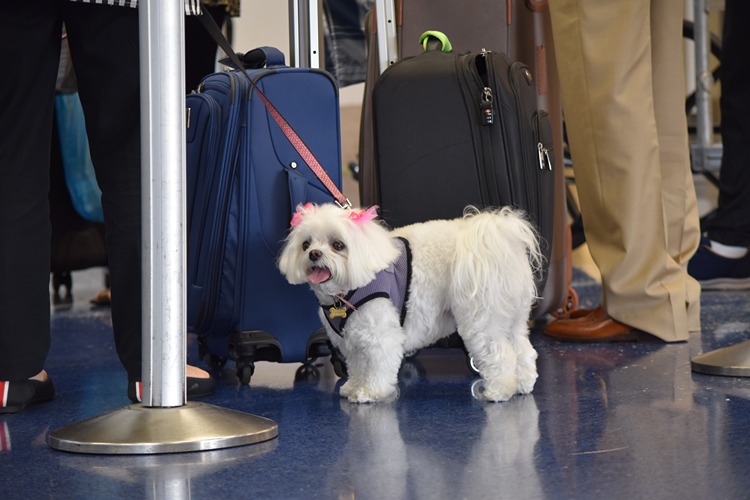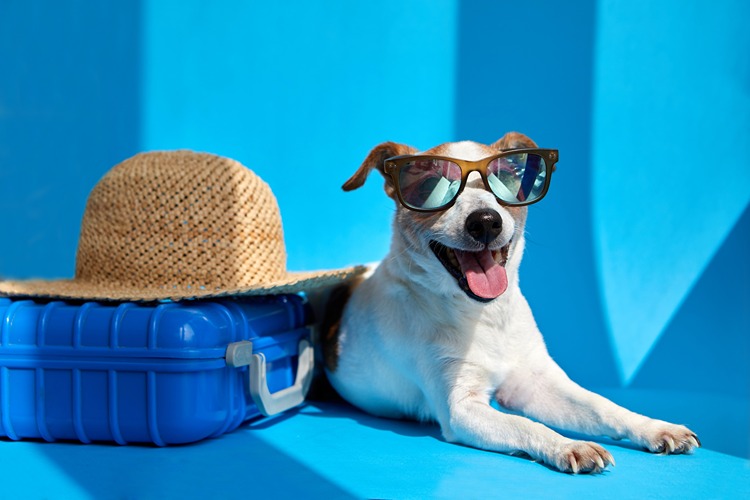Summertime means it’s time for vacation and travel, but it’s important to remember that hot weather can pose serious risks to your furry friends. Whether you’re hitting the road or taking to the skies, it’s essential to take the necessary precautions to keep your pet safe and comfortable during hot weather travel. In this article, we’ll cover everything you need to know about pet safety tips for hot weather travel.
1. Plan Ahead
When it comes to hot weather travel, planning ahead is essential to ensure your pet’s safety and comfort. Consider the following tips:
- Check the weather forecast for your destination and plan accordingly.
- Avoid traveling during the hottest parts of the day.
- Research pet-friendly accommodations that offer air conditioning or other cooling options.
Planning ahead can help you make better decisions about when and where to travel with your pet. For example, if you’re planning a road trip, try to schedule your driving for the early morning or late evening, when temperatures are cooler. You can also research pet-friendly hotels or other accommodations that offer air conditioning or other cooling options, which can help keep your pet comfortable during the hot weather.
How to Plan Ahead for Hot Weather Travel
When planning ahead for hot weather travel, consider the following tips:
- Check the weather forecast for your destination and plan your travel accordingly.
- Choose accommodations that offer air conditioning or other cooling options to help keep your pet comfortable.
- Avoid traveling during the hottest parts of the day to reduce the risk of heat stroke or dehydration.
2. Keep Your Pet Hydrated
Staying hydrated is essential for your pet’s health and safety during hot weather travel. Make sure to bring plenty of water and offer it to your pet frequently throughout the journey.
- Bring a portable water bowl and plenty of water for your pet.
- Offer water to your pet frequently, especially during rest stops.
- Avoid giving your pet water from unknown sources, such as lakes or streams, as it may contain harmful bacteria or parasites.
Dehydration can be a serious risk during hot weather travel, especially if your pet is exposed to high temperatures for an extended period of time. Be sure to bring plenty of fresh water for your pet and offer it frequently, especially during rest stops. Avoid giving your pet water from unknown sources, such as lakes or streams, as it may contain harmful bacteria or parasites.
How to Keep Your Pet Hydrated During Hot Weather Travel
When keeping your pet hydrated during hot weather travel, consider the following tips:
- Bring a portable water bowl and plenty of fresh water for your pet.
- Offer water to your pet frequently, especially during rest stops.
- Avoid giving your pet water from unknown sources, as it may contain harmful bacteria or parasites.
3. Avoid Overheating
Hot weather can cause pets to overheat quickly, which can lead to heat stroke, dehydration, or other serious health issues. To avoid overheating, consider the following tips:
- Avoid leaving your pet in a parked car, even for a short period of time.
- Provide plenty of shade and ventilation for your pet.
- Avoid exercising your pet during the hottest parts of the day.
- Limit the amount of time your pet spends outdoors during hot weather.
- Consider using a cooling pad or vest to help regulate your pet’s body temperature.
Overheating can be dangerous for pets and can lead to serious health issues, such as heat stroke or dehydration. It’s important to take steps to prevent overheating, such as providing shade and ventilation, limiting outdoor time, and avoiding exercising your pet during the hottest parts of the day. You can also consider using a cooling pad or vest to help regulate your pet’s body temperature.
How to Avoid Overheating During Hot Weather Travel
To avoid overheating during hot weather travel, consider the following tips:
- Never leave your pet in a parked car, even for a short period of time.
- Provide plenty of shade and ventilation for your pet.
- Limit your pet’s outdoor time during hot weather.
- Avoid exercising your pet during the hottest parts of the day.
- Consider using a cooling pad or vest to help regulate your pet’s body temperature.
4. Be Prepared for Emergencies
No matter how well you plan, emergencies can still happen. It’s important to be prepared for any situation and know what to do in case of an emergency.
- Research emergency veterinary clinics near your travel destination.
- Bring a pet first-aid kit that includes any medications your pet may need.
- Keep your pet’s medical records and identification tags with you at all times.
In case of an emergency, it’s important to be prepared and know what to do. Research emergency veterinary clinics near your travel destination and bring a pet first-aid kit that includes any medications your pet may need. Keep your pet’s medical records and identification tags with you at all times, in case they become separated from you.
How to Be Prepared for Emergencies During Hot Weather Travel
To be prepared for emergencies during hot weather travel, consider the following tips:
- Research emergency veterinary clinics near your travel destination.
- Bring a pet first-aid kit that includes any medications your pet may need.
- Keep your pet’s medical records and identification tags with you at all times.
FAQs
Q: Can I bring my pet on a plane during hot weather?
A: It’s possible to bring your pet on a plane during hot weather, but it’s important to check with the airline beforehand. Some airlines have temperature restrictions for pet travel, and may not allow pets to fly during certain times of the year.
Q: Can I give my pet ice cubes to cool down?
A: While ice cubes can help cool down your pet, it’s important to avoid giving them too much at once. Large amounts of ice water can lower your pet’s body temperature too quickly, which can be dangerous. Offer ice cubes in moderation, and make sure your pet has access to plenty of fresh water.
Q: What are the signs of heat stroke in pets?
A: Signs of heat stroke in pets include excessive panting, drooling, vomiting, diarrhea, lethargy, and collapse. If you suspect your pet may be suffering from heat stroke, it’s important to seek veterinary care immediately.
Bottom Line
Hot weather travel with pets requires extra preparation and care to ensure your furry friend stays safe and comfortable. Remember to plan ahead, provide plenty of water and shade, avoid exercising during the hottest parts of the day, and be prepared for emergencies.
Additional Resources
Here are some additional resources to help you plan your hot weather travel with pets:
- ASPCA – Travel Safety Tips: The ASPCA offers tips for safe pet travel, including how to keep your pet comfortable during hot weather.
- American Veterinary Medical Association – Traveling with Your Pet: The AVMA provides information on how to travel safely with your pet, including tips for hot weather travel.


